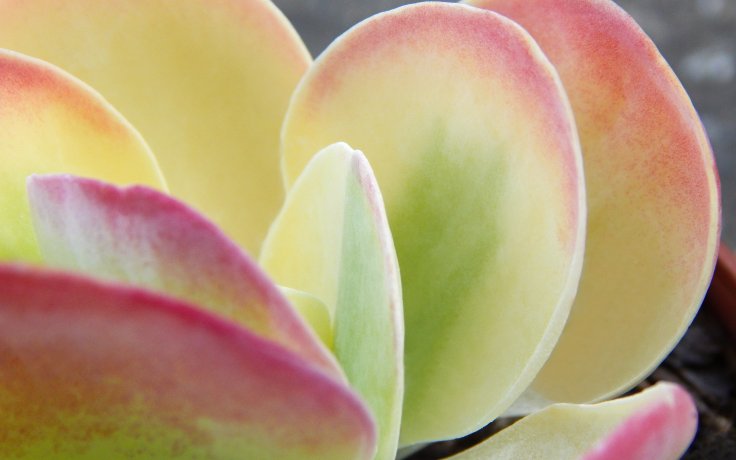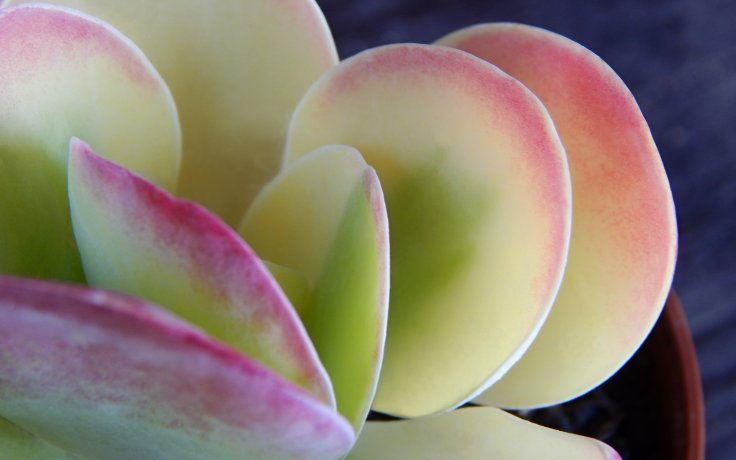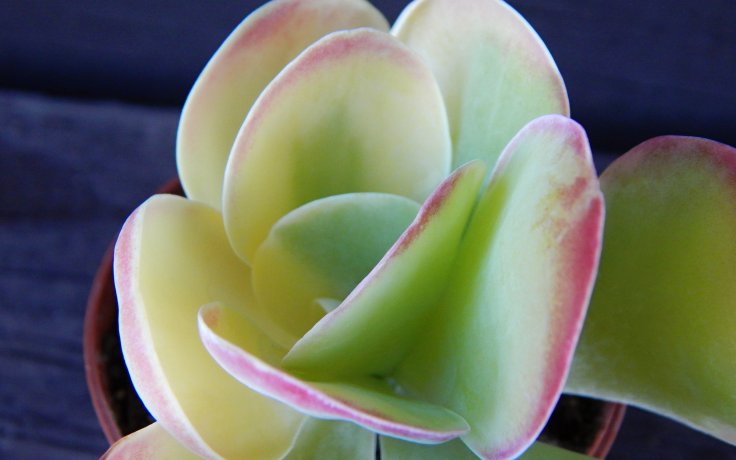- Home
- Succulents
- Kalanchoe
- Kalanchoe thyrsiflora variegata





Kalanchoe thyrsiflora variegata
The plant likes a sunny habitat.
Always water a few days after the substrate has dried out. In winter, limit watering. We can water in larger doses than other succulents.
It can tolerate -3.9 °C in the short term. However, the plant is not hardy.
The colour of the leaves of this species varies in a wide range of colours. In summer in sunlight it goes from orange, red to pink and in winter it turns cream to green. For better growth, I recommend repotting in a larger pot.
Kalanchoe thyrsiflora variegata, commonly known as Paddle Plant, is a similarly shaped succulent plant, native in form to Botswana and South Africa. This variegated form is distinguished from the classic green version of Kalanchoe thyrsiflora by its beautifully coloured leaves, which change throughout the season depending on sunlight.
The leaves are characterised by a colour palette that ranges from light green to cream, red to orange. The more sunlight the plant receives, the more colourful the leaves will be. In summer, with plenty of sunlight, the leaves will turn vibrant shades of red and orange, while in winter, with less sunlight, they will turn lighter tones of green and cream. Summer leaves arrange themselves in compact rosettes with light watering, forming a lovely mosaic of colours low to the ground. Older leaves gradually dry and die back, ensuring a constant process of renewal and rejuvenation. The stem is quite thick and covered with a thick layer of wax to protect it from drying out. The wax appears as a fine powder, similar to flour, which is easily rubbed off when touched.
Flowers are relatively rare.
Kalanchoe thyrsiflora variegata is a slow-growing succulent plant. The plant can be fertilised lightly with, for example, cactus and succulent fertiliser. In summer, the substrate under the plant may appear to be covered with mould, but this is a waxy coating, not a fungal disease. Because of its variety and durability, it can be a great addition to any succulent collection. However, it is important to remember that it is a relatively rare and slow growing plant, so cherish and care for it.